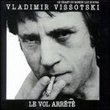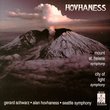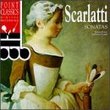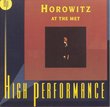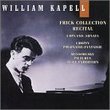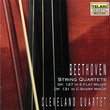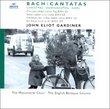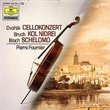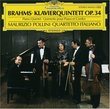| All Artists: Heinrich Ignaz Franz Biber, Andrew Manze, Nigel North, John Toll Title: H.I.F. Biber: Violin Sonatas Members Wishing: 0 Total Copies: 0 Label: Harmonia Mundi Release Date: 10/25/1994 Album Type: Import Genre: Classical Styles: Chamber Music, Historical Periods, Baroque (c.1600-1750), Instruments, Strings Number of Discs: 2 SwapaCD Credits: 2 UPC: 093046713423 |
Search - Heinrich Ignaz Franz Biber, Andrew Manze, Nigel North :: H.I.F. Biber: Violin Sonatas
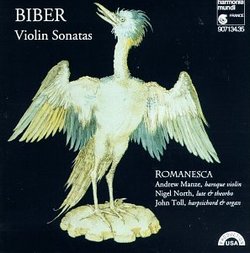 | Heinrich Ignaz Franz Biber, Andrew Manze, Nigel North H.I.F. Biber: Violin Sonatas Genre: Classical
Andrew Manze is, in my opinion, one of the finest contemporary violinists, and his playing of this fiendishly brilliant and difficult music will simply amaze you. Biber was unquestionably the greatest violinist of the 17... more » |
Larger Image |
CD DetailsSynopsis
Amazon.com essential recording Andrew Manze is, in my opinion, one of the finest contemporary violinists, and his playing of this fiendishly brilliant and difficult music will simply amaze you. Biber was unquestionably the greatest violinist of the 17th century; his sonatas and other solo works were the most technically difficult. But they are also the most wonderful fun to listen to--the famous Sonata Representativa has the player imitating all manner of animal noises and other things. It's hilarious, gorgeous, and it's never been performed better. If this isn't quite simply the best record of Baroque violin music ever made, then I don't know what is. --David Hurwitz Similar CDs
Similarly Requested CDs |
CD ReviewsManze is the first modern virtuoso of the baroque violin 03/23/1999 (5 out of 5 stars) "This won a Gramophone Award a couple years ago, at which point I had never heard of Andrew Manze. The praise was so lavish I was persuaded to buy. What I heard was so extravagantly talented that I wondered why I'd never heard of this violinist before.Manze is every bit as much of an alchemist on the violin as is Perlman or any of the top-notch modern violinists you care to name. In boldness of tone and incisiveness, he reminds me of Salvatore Accardo, who did some impressive Vivaldi on the modern violin in the 70's. Manze adds to it a great sense of style and technique that blows you away. As mentioned by the Amazon.com reviewer, the Sonatas Representativas have some animal-imitative glissandi and other special effects that are pulled off with a playfulness and precision that are breathtaking.I liked Reinhard Goebel's rendition of the Passacaglia (on Archiv, with the Mystery Sonatas) until I heard Manze. Manze plays it so well I can't listen to Goebel now.This is certainly the best baroque violin playing I have ever heard." The best by the best William A. Smith | Atlanta, GA USA | 01/29/2003 (5 out of 5 stars) "Biber is the finest German composer between Schutz and Bach. In fact, since discovering Biber, I've found that Bach gets a little difficult to listen to. Among other things, Biber was one of the greatest--perhaps the greatest--violin virtuosi of the 17th century. (Charles Burney among others was of that opinion.) These sonatas are transcendant. I first heard about 10 seconds of the first track of this recording on NPR and immediately had to buy it.Andrew Manze is probably the finest violinist in the world, and has the incredible good taste to specialize in 17th and 18th century music. Every one of his recordings (I have about 20) is wonderful.This recording is a must." Breathtaking! hcf | 02/08/2000 (5 out of 5 stars) "I didn't think I'd ever be reviewing an instrumental recording. I lack an intuitive understanding of instrumental music, so, resources being limited, I usually limit my collection to vocal genres. But this recording was so wildly praised by critics (Gramophone award; BBC Music 50 best baroque recordings of all time, etc.), that I decided to give it a shot. I'm glad I did. The music is absolutely fascinating, and brilliantly performed. The inventive melodies, full of varied nuances, leave a constant impression of improvization - it is almost hard to believe that in fact every note is captured on the printed page. With the composer's virtuosity so vividly imprinted in the music, Andrew Manze is careful not to over-characterize these sonatas. Every response is calculated to match the mood of the material: from the mellifluous preludes, such as in Sonatas 2 & 3, to the deft recitatives, such as in Sonata 5, down to the whimsical animal effects in Sonata Representativa. Although Manze's violing playing definitely takes center stage, the other two musicians also need to be lauded for their wonderful contributions. I particularly enjoyed the Passacaglia for solo lute played by Nigel North. Interestingly, this lute piece improvizes on the melody that is also heard in Sonata 6 - and in both cases the melody is tantalizingly familiar. It is no secret that Biber didn't shy away from borrowing other people's music. If you figure out where this one comes from, please let me know."
|

 Track Listings (17) - Disc #1
Track Listings (17) - Disc #1

